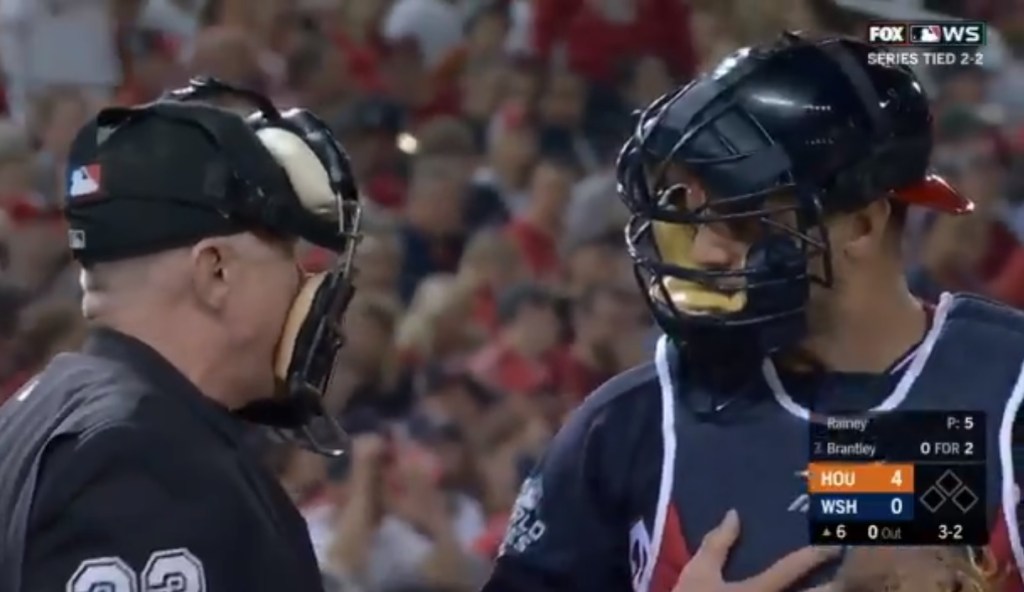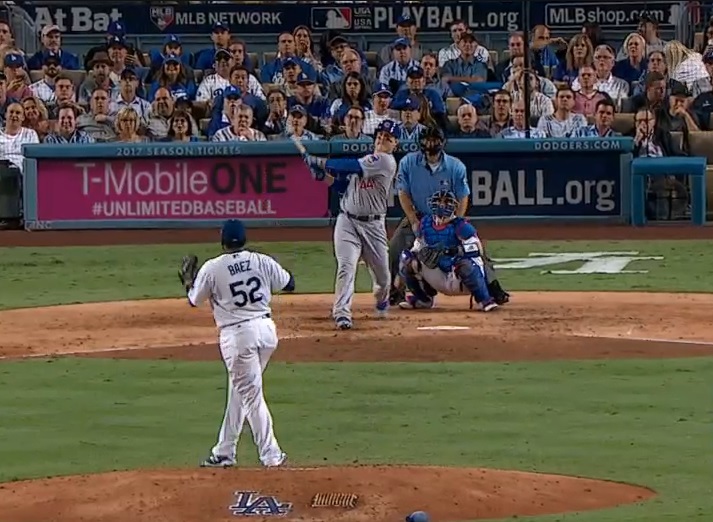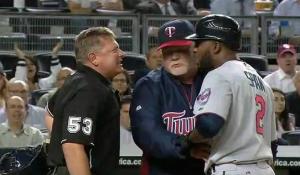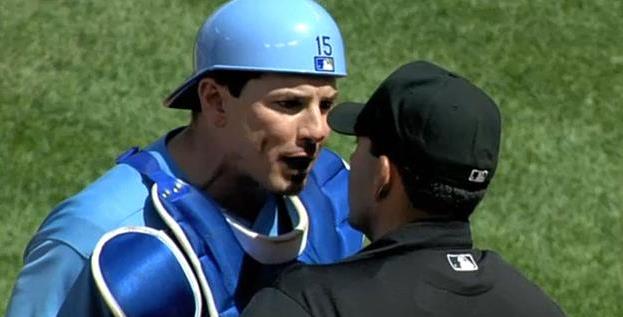
Game 5 of the World Series gave us a particularly interesting moment during the course of an otherwise dull blowout: After a host of questionable ball-strike calls, plate ump Lance Barksdale outdid himself during the sixth inning.
Nats right-hander Tanner Rainey threw a 2-2 fastball to Michael Brantley that should have been called strike three, after which catcher Yan Gomes popped up from his crouch to toss the ball around the infield. Apparently he did so a bit too quickly, preempting Barksdale’s official decision. To teach Gomes a lesson, Barksdale called the pitch a ball and kept the at-bat alive.
“You were taking off on me,” Barksdale said when Gomes asked what happened.
The catcher was incredulous, replying, “Oh, it’s my fault?”
A few things happened here. One, Gomes turned around to converse with the plate ump. In a world of sensitive egos and well-established rules of comportment, this is an absolute no-no. Catchers question umpires’ calls all the time, but they inevitably do so from the squat, while facing the pitcher. “You never show them up—that’s the worst thing you can do,” former Tigers catcher Jim Price said in an interview for The Baseball Codes. “Don’t ever turn around to talk to them.”
Occasionally, the umpire will walk around and dust off the plate in order to face the catcher and offer an eye-to-eye retort. It can be vocal and it can be personal, but it’s also private, done behind a mask. Nobody watching from the stands or on TV realizes anything is happening. This is time-tested baseball tradition.
“The best advice that I can give is to have a little dialogue with the home plate umpire throughout the game,” longtime catcher Michael Barrett told ESPN in 2007. “Break the tension a little bit. Realize that the home plate umpire is the authority and make sure to communicate with him during the game and as the game goes on. It’s important to understand that the umpire is human, he’s going to make mistakes like everyone else, and we are going to have a better relationship if we are talking.”
Who knows what Gomes might have already said to Barksdale over the course of the game, though in light of the umpire’s consistently shaky calls, some sort of dialog between them wouldn’t be surprising.
Former Yankees reliever George Frazier once found himself in a similar situation as pertains to prematurely reacting to what he believed to be strike three. As Frazier told it during an interview for The Baseball Codes, it was the ninth inning in Baltimore, and Len Sakata was at the plate with two strikes and two outs.
“I painted a slider and took a hop toward the dugout,” he said. “I’m looking in [at plate umpire Durwood Merrill], and he’s looking at me. Then he comes out toward the mound. I’m from Oklahoma, and he was a big OU football recruiter—he recruited Billy Sims from Texas. He said, ‘What are you doin’, Okie?’ I said, ‘Man, come on! That ball was right there.’ He says ‘OK, put it there again and we’ll ring him up.’ ”
Frazier agreed … but didn’t execute.
“I threw a pitch that literally bounced a foot out in front of the plate,” he said. “Durwood had already started his wind to ring him up, and he’s walking off. The umpires had to go down our dugout steps, where I’m walking off too, and he’s growling, ‘Don’t ever do that to me again.’ Sakata was right behind him, yelling, ‘You’ve gotta be kidding me!’ ”
“Durwood said to me, ‘What are you doing?’ I said, ‘You shoulda rung him up on the other one!’ ”
(For what it’s worth, Frazier never faced Sakata in the described circumstance. As is the way with ballplayers telling decades-old stories, details are known to inadvertently blur.)
The difference between Frazer and Rainey was that Lance Barksdale was working the freaking World Series. Petty displays of ego shouldn’t be part of an umpire’s tool kit in the first place, but in the postseason they need to be put away entirely. Luckily, the call on Brantley had no bearing on the game’s outcome, but strikes are strikes and balls are balls and, sure, calls might get blown, but for a guy to try to teach a lesson to a veteran catcher on the sport’s biggest stage is downright shameful.







